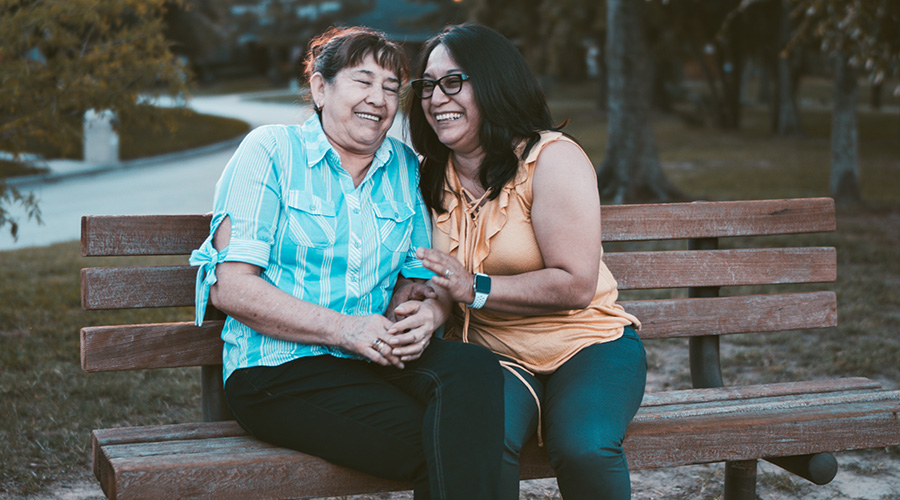7 Strategies to Help You Achieve Work-Life Balance as a Family Caregiver
By: Rosemarie Tamunday Casanova — RN, BSN, MHA

Taking on the role of a family caregiver can be an incredibly rewarding experience, but it can also be a huge challenge that requires time, energy, and a lot of personal sacrifice. Balancing your responsibilities as a caregiver with the other aspects of your life can be difficult, but it’s not impossible.
With the right strategies, you can achieve a healthy work-life balance and be the best caregiver you can be. In this article, we’ll explore seven ways that you can balance your life as a family caregiver, so that you can feel confident, supported, and successful.
What is work-life balance?

There isn’t one, universal definition of “work-life balance,” but there are generally accepted themes that run through it. Work-life balance is all about finding a healthy equilibrium between the different aspects of your life, so that each area is given the attention and focus it needs, without being neglected or neglected too much.
There isn’t one “right” way to find balance, but rather a journey of self-discovery that might look different for each person.
Understanding your own needs
Before you can start to explore ways to achieve work-life balance, it’s important to understand your own needs. What does a healthy life look like for you? Are there certain aspects of your life that you feel need more attention? What do you need to feel confident, supported, and successful?
When you start to understand your own needs, you’ll be able to identify where you might be putting too much or not enough emphasis on different aspects of your life. Once you’ve identified what needs more attention and what needs less, you can start to make small changes to create a more balanced life. Remember, you don’t have to make big, drastic changes all at once. Small changes are just as effective and can help you to sustain work-life balance over time.

Prioritizing self-care
As a family caregiver, you need to make sure that your own needs are a priority. But prioritizing self-care doesn’t just mean that you’re taking time for yourself. It means that you’re actively taking care of yourself, too. Taking care of yourself doesn’t mean that you should put yourself first at the expense of others. Instead, it means that you’re actively looking for ways to support yourself and your needs, so that you can be at your best for the people that you love.
Self-care is a long-term investment. You might find that you need to adjust how you practice it over time as your needs change, but the more that you can actively practice self-care, the better you’ll be able to balance your life as a family caregiver, too. Think about the ways that you can actively take care of yourself and make sure that you’re prioritizing self-care in your life.
Setting boundaries
Setting boundaries isn’t the same as prioritizing self-care, but they do go hand in hand. Setting boundaries doesn’t mean that you’re being selfish or that you don’t care about others. Instead, it’s about finding the right balance between investing in yourself and in the needs of others. Setting boundaries is about being able to confidently and honestly communicate what you can and can’t do, and what your needs are.
This can be challenging when you’re trying to juggle caring for loved ones with other responsibilities and commitments, but it’s an important part of achieving work-life balance. It can be difficult to set boundaries when you’re feeling overwhelmed or over-committed, but it’s important that you try. You may need to accept that there are certain things that you can’t do, but by setting boundaries, you can help to create space in your life and give yourself the support that you need.

Seeking out support
Family caregivers often don’t find ways to actively support themselves until they’re in a crisis. This is a shame, because there are many ways to actively seek out support in your daily life. Whether this is through joining a support group, finding a therapist, speaking with a trusted friend, or investing in self-care activities, there are lots of ways to seek out support.
Seeking out support doesn’t have to be an enormous, lifelong commitment, either. You can start small and see how it feels to actively seek out support. You don’t need to share every detail of your life with others, but having a safe place to discuss how you’re feeling can help a great deal with achieving work-life balance, too.
Exploring helpful resources
As a family caregiver, you may find that certain aspects of your life need more attention than others. If you’re feeling particularly overwhelmed or stressed, you may want to explore helpful resources in your community. There may be support groups in your area that provide support to family caregivers or a local library may offer free or low-cost workshops on ways to achieve work-life balance.
When you’re exploring ways to support yourself, it’s important to find a resource that resonates with you. Trying out a few different things and seeing what works best for you can help to establish a healthy and sustainable support network.

Practicing mindfulness
One of the most effective ways that you can support yourself and achieve work-life balance is to practice mindfulness. Mindfulness is a way of being fully present and focused on the moment. It’s a great way of actively caring for yourself and finding a sense of calm in your daily life. The good news is that you don’t have to master meditation in one go and you can start to incorporate it into your daily life right now!
You can find lots of different ways to practice mindfulness in your daily life, whether that’s taking a moment to appreciate the view from your window or practicing gratitude.
Takeaways
When you’re caring for a loved one, it’s important to make time for yourself, too. The best way to do this is to make sure that you’re prioritizing self-care, setting boundaries, and seeking out support. By using these strategies, you’ll be able to balance your life as a family caregiver and feel confident, supported, and successful.



